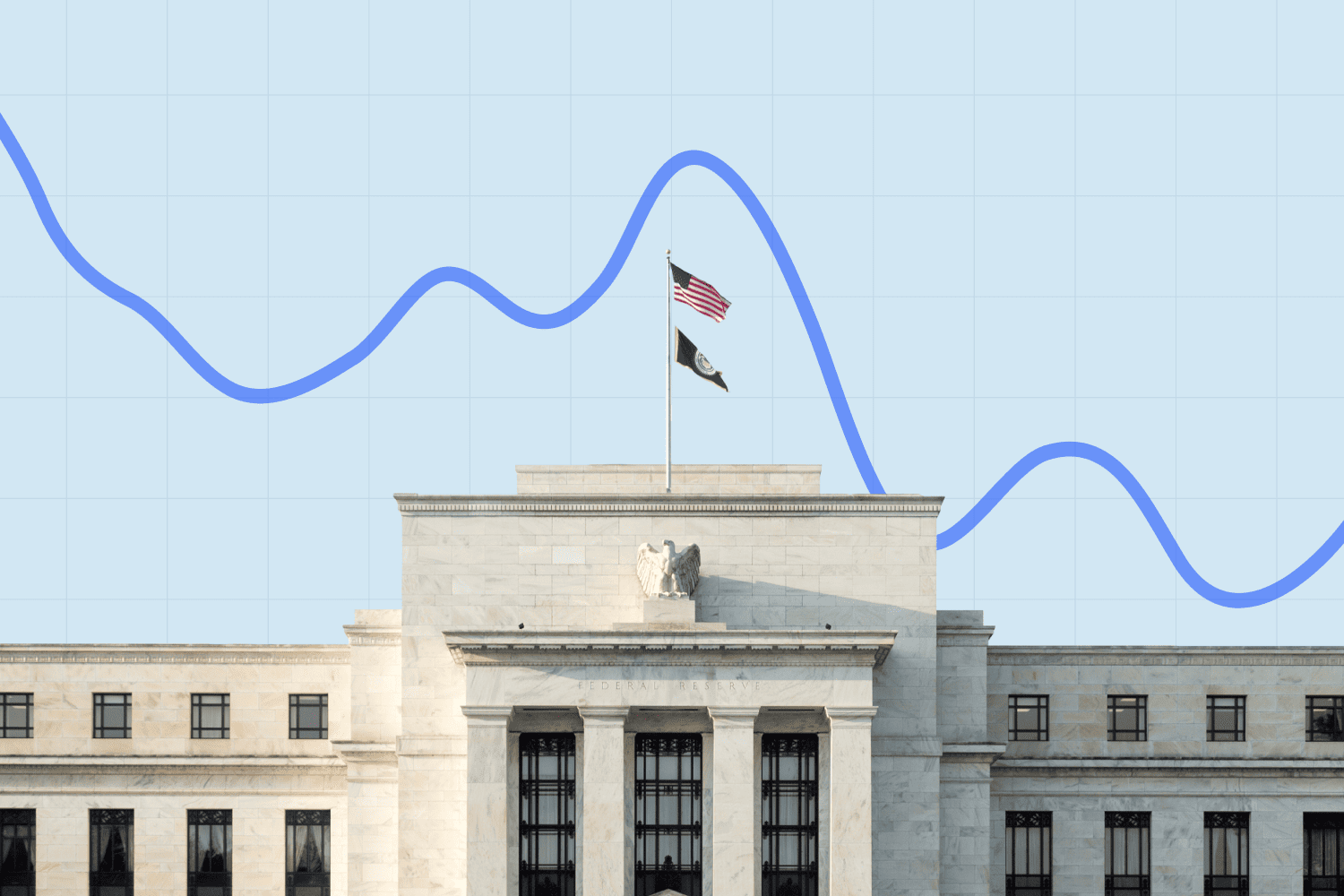Since the inception of the COVID-19 pandemic, interest rates have been anything but favorable to investors. In an effort to address persistent inflationary pressures, the Federal Reserve implemented a series of 11 incremental increases to the federal funds rate spanning from March 2022 to July 2023.
But following its meeting in December 2023, the Fed outlined its intention to gradually reduce the benchmark rate to 4.6% by the conclusion of 2024, anticipating three quarter-point cuts. Although inflation has slightly curbed, the Fed is waiting for more encouraging economic data before implementing these planned adjustments.

During its initial 2024 meeting this past January, the Federal Open Market Committee (FOMC) decided to maintain interest rates, leaving many to wonder if rate stability is here to stay. While the Fed suggested this could happen as soon as this summer, there’s still barriers that could delay this potential deadline. The FOMC is scheduled to convene six more times this year, having met March 19-20, 2024, where it was announced that interest rates would remain unchanged (as predicted).
So, what market factors are impacting rate stabilization? How has the news of potential rate cuts affected the market? And what are the conversations industry leaders are having about the current rates imposed by the Fed? Below, we dive in these pressing questions and more.
Will Interest Rates Go Down in 2024?
This past January, the Federal Reserve opted to maintain its current stance on interest rates, keeping them steady (between 5.25% to 5.50% as the central bank’s benchmark) at their initial meeting for the year. The rate has been in place since July and is the highest in over two decades.
While the Fed may have intentions to lower rates in the future, the timing of these cuts remains uncertain. The FOMC indicated that it will not consider reducing the target range until it is more confident that inflation is steadily approaching the 2% mark. Federal Reserve Chair Jerome Powell stated that rate cuts are likely to commence sometime in 2024, but the Fed’s current strategy is to await further confirmation that its efforts to combat inflation are yielding lasting results before making any adjustments.
Powell suggested that the Fed faces two risks—the first being cutting rates too soon could “result in a reversal of progress” in taming inflation, and the second that cutting rates “too late or too little” could weaken the economy and hiring cycles. The approach to balancing these two risks represents a departure from the strategy employed in the early part of last year.
At that time, the Federal Reserve was actively and quickly increasing its benchmark rate in response to high inflation. There is intense speculation in the investment space as to when the Fed will make its first move to reduce its benchmark rate, which currently stands at a 23-year high of approximately 5.4%. This reduction would result in increased or loosened lending, leading to accelerated funding for dealmaking, an ease in market volatility, and consequently, increased consumer and business spending that will boost valuations.
The bottom line: the prevailing sentiment among most analysts and investors is that the initial rate cut will occur in June, although a May adjustment is still within the realm of possibility. Following their meeting in December, Fed officials announced their intent to implement three rate cuts over the course of this year. “We’ve made a lot of progress on inflation. We just want to make sure that we do get the job done in a sustainable way,” Federal Reserve Chair Jerome Powell declared following the January meeting, The Wall Street Journal reported.
Reaction to the Fed’s Announcement
While the Federal Reserve may not cut interest rates anytime soon, excitement is certainly palpable with the release of the Fed’s latest statement and updated quarterly economic projections. U.S. stocks experienced a significant surge. This upward trend continued during Powell’s press conference, resulting in a strong close, with the S&P 500 index gaining roughly 1.4% and the Dow Jones Industrial Average reaching a record high at the close of trading.
Concurrently, the US dollar weakened against a handful of currencies, while U.S. Treasury yields declined. Market participants trading futures contracts that settle based on the Fed’s policy rate are anticipating a commencement of rate cuts in March. Additionally, they are projecting the policy rate to be 1.5 percentage points lower than its current level by the end of 2024.
But does this future rate cutback ensure longevity for a more stable economy?
The Federal Reserve’s current stance on rate hikes mirrors its aggressive approach during the early 1980s, a period marked by both soaring inflation and a faltering economy. However, recent updates regarding inflation have provided a sense of optimism. The consumer price index increased by 3% over a 12-month period in June, a significant drop from the 9.1% rate observed a year earlier. Moreover, consumers are expressing growing confidence in the future trajectory of prices, as indicated by the latest University of Michigan sentiment survey projecting a 3.4% pace for the upcoming year.
C-Suite Responses Across Industries
It’s no surprise that across any and every major sector, earnings calls have been plagued by mentions of “high interest rates, “inflation,” and “rising costs” for endless quarters. From finance to agriculture, energy, and many more, executives have reported lowered earnings and operation cutbacks due to high interest rates.
“On credit, our clients are likely to remain constrained until interest rates start to decline. Credit impairment charges are expected to peak in the first 6 months of 2024, driven primarily by ongoing strain in the personal and private banking portfolio. For the full year, the credit loss ratio is expected to remain within but near the top of the group’s through-the-cycle credit loss ratio of 70 basis points to 100 basis points. Earnings growth and improved returns are anticipated from the insurance and asset management business.”
– Standard Bank Group Limited | Earnings Call 2023
“Second, an overall decline in building construction industry due to higher interest rates and cost inflation; and third, a declining renovation business for the sanitary sector due to pull-forward effects from the COVID-19 induced home improvement trend and the shift from sanitary to energy-related renovation in several European countries last year.”
– Geberit AG | Earnings Call 2023
“That on a macro, of course, Europe has been sort of behind the U.S. in terms of its perception of when interest rates may start to decline. But I do think if you see the U.S. decline at some point this year, you’ll see Europe probably following its footsteps, not too much further after that.”
– Ramaco Resources | Earnings Call Q4 2023
“Do they need interest rates to decline to be good investments from here? Yeah, I’ll be totally honest in that I think this is a huge headwind for performance within a lot of the private funds, not only for Brookfield but really in this real estate, private equity universe. We could see very mediocre subpar performance, especially for funds that deployed and invested significant amounts of capital from 2021 through 2023. I would expect those vintages to be underperformers and laggards. One of the beauties of the private fund world closed-end funds is that they’re typically structured as 10-year vehicles with multiple options to extend.. My expectation would be that valuations will continue to be marked in line over the years.”
– Former VP of BP | Expert Call
“We’re not buying a lot of equipment. We’re trying to be as leanly staffed as we can. Costs are going up, and we’re trying to combat a margin decline year over year against expense appreciation. Interest rates are higher to run a company. Labor is higher. Insurance is higher. Fuel is higher than it normally is, but it’s flat to last year. There’s a lot of inflationary factors affecting running a retail business today. The only way you’re going to combat declining margins is tackle the expense side of your house.”
– CTVA | Expert Call
Stay Ahead of the Curve with AlphaSense
In this rapidly evolving environment, investors must embrace a holistic approach that includes digital adoption and AI integration with a deep understanding of global economic and geopolitical dynamics. The future success of any investment decision will hinge on their ability to leverage technological advancements not just as tools, but as integral components of effective strategy.
This means going beyond automating tasks and analyzing data, and instead reimagining business models, redefining customer engagement, and reshaping investment strategies for a digital-first world.
AlphaSense is an all-in-one market intelligence platform helping investors make faster, data-driven decisions with confidence.
On the AlphaSense platform, you’ll access:
- 10,000+ leading content sources, including filings, earnings, and press from hundreds of thousands of public companies and over 1.4 million private companies, plus tens of thousands of expert interviews and broker research from over 1,500 sources
- Purpose-built AI that seamlessly layers Company Recognition, Sentiment Analysis, Topic Extraction, and Smart Synonyms™ into the search technology
- Generative AI features that include Smart Summaries, AlphaSense Assistant, and Enterprise Intelligence
- Customizable dashboards and alerts that enable you to monitor companies and topics with ease and obtain all the personalized insights you need to succeed
- Ease of integration with your current systems and tools for seamless implementation and high usability across your organization
Explore all that AlphaSense has to offer firsthand. Start your free trial today.





